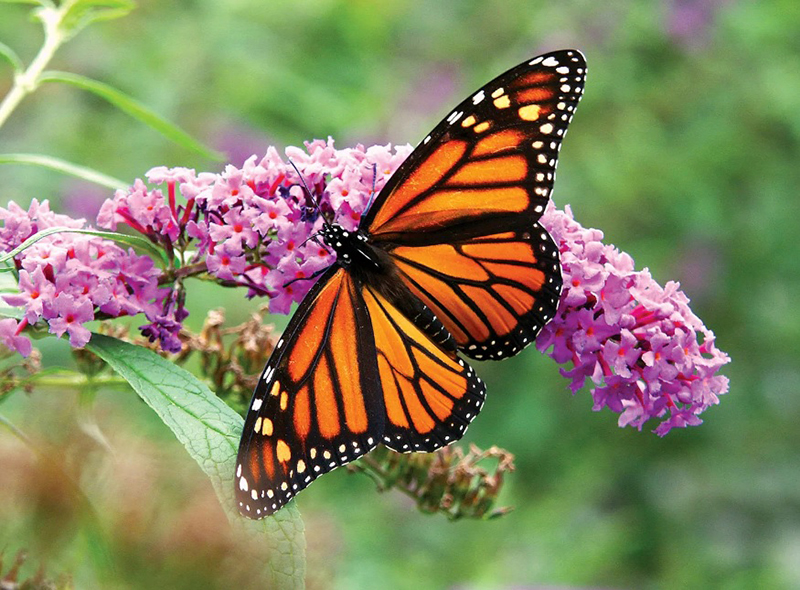
Butterflies in the Bible: A Sign of Resurrection
When we think of butterflies in the Bible, the first passage that comes to mind is likely Matthew 27:50-53, which describes the moment Jesus died on the cross:
“And when Jesus had cried out again in a loud voice, he gave up his spirit. At that moment the curtain of the temple was torn in two from top to bottom. The earth shook, the rocks split and the tombs broke open. The bodies of many holy people who had died were raised to life. They came out of the tombs after Jesus’ resurrection and went into the holy city and appeared to many people.”
In the Bible, there are several references to butterflies and their symbolic meaning. One of the most common interpretations is that the butterfly represents transformation and rebirth. This is due to the butterfly’s life cycle, which begins as a caterpillar, transforms into a chrysalis or cocoon, and emerges as a beautiful butterfly.
This transformation process has been seen as a metaphor for the spiritual transformation that occurs when a person accepts Christ into their life. Just as the caterpillar must undergo a radical change in order to become a butterfly, so too must a person undergo a radical change in order to be “born again” in Christ.
Furthermore, the butterfly’s ability to fly has been interpreted as a symbol of freedom and liberation. This is particularly relevant in the context of Christ’s resurrection, which is often seen as a triumph over death and sin. In this sense, the butterfly can be seen as a foreshadowing of Christ’s resurrection from the dead, as well as a symbol of hope and new life.
Butterfly in the Bible: Hope and Renewal
In addition to representing the resurrection, butterflies also symbolize hope and renewal in the Christian tradition. This is particularly evident in 2 Corinthians 5:17, which states: “Therefore, if anyone is in Christ, the new creation has come: The old has gone, the new is here!” This verse speaks to the transformative power of faith and how it can help us shed our old ways of being and embrace a new life in Christ.
In the Bible, butterflies are often used as metaphors for transformation and renewal. For example, in 2 Corinthians 5:17, Paul writes, “Therefore, if anyone is in Christ, the new creation has come: The old has gone, the new is here!” This passage speaks to the transformative power of God’s love and the new life that we can experience when we surrender ourselves to Him.
Another example of the butterfly’s symbolic significance can be found in Psalm 30:11-12, which says, “You turned my wailing into dancing; you removed my sackcloth and clothed me with joy, that my heart may sing your praises and not be silent. Lord my God, I will praise you forever.” This passage speaks to the idea of transformation from mourning to rejoicing, just as the caterpillar transforms into a butterfly.
The metaphor of butterflies in the Bible represents a powerful transformation process that relates to shedding one’s former self and emerging anew, more beautiful and free than ever before. Butterflies undergo a metamorphosis from an egg to a caterpillar, then into a chrysalis or pupa, and finally, they emerge as a beautiful winged butterfly.
This transformation process is similar to how individuals can transform their lives, shedding old habits, beliefs, and behaviors to become better versions of themselves. The caterpillar phase can represent a time of growth and development, where individuals learn and acquire new skills and knowledge. However, just like the caterpillar must shed its skin to progress, individuals must also let go of their old ways of thinking and behaving to move forward.
The chrysalis or pupa stage represents a time of introspection and reflection, where individuals may take time to evaluate their lives and consider what changes need to be made. This stage can be challenging and uncomfortable, much like the caterpillar breaking out of its chrysalis to become a butterfly. But, just as the butterfly emerges with newfound freedom, beauty, and grace, individuals too can emerge from their struggles with greater strength, freedom, and purpose.
Furthermore, the butterfly’s ability to fly symbolizes freedom and liberation, which can represent a spiritual awakening or renewal. Just as the butterfly spreads its wings and takes flight, individuals can spread their wings, soar to new heights, and explore new possibilities.
Butterfly Meaning in the Bible: Transformation and Growth
The transformation of a caterpillar into a butterfly is a remarkable process that can take anywhere from several weeks to several months. During this time, the caterpillar undergoes a series of profound changes, including the breaking down of its old body and the rebuilding of a new one. This process is sometimes referred to as metamorphosis, which means “change in form.”
As Christians, we are called to undergo a similar process of transformation and growth. We are encouraged to shed our old ways of thinking and behaving and become new creations in Christ (2 Corinthians 5:17).
Butterflies are not directly mentioned in the Bible, but their transformation from a caterpillar to a butterfly is often used as a metaphor for spiritual transformation. The process of metamorphosis, where a caterpillar transforms into a butterfly, is a powerful symbol of rebirth and renewal.
In many ways, the journey of a caterpillar mirrors our own spiritual journey. Just as the caterpillar must go through a period of change and growth before it can transform, we too must go through our own periods of self-reflection and personal growth. We must be willing to shed our old selves and embrace the unknown future that lies ahead.
Like the butterfly, we must also be willing to let go of our former selves in order to fully embrace our new identity. This can be a difficult process, as it often requires us to confront our deepest fears and insecurities. However, it is only by confronting these challenges that we can truly grow and transform.
In addition, the butterfly is also a symbol of hope and faith. It reminds us that even during times of darkness and uncertainty, there is always the possibility of transformation and new beginnings. By embracing the unknown and having faith in ourselves and our abilities, we can emerge from difficult situations stronger and more resilient than ever before.
Butterflies in Christian Culture
Butterflies have been an enduring symbol in Christian art and culture for centuries. In medieval Christian art, the butterfly was frequently depicted as a symbol of the resurrection – the idea that after death, a person’s soul could rise again to a new life. Just as a caterpillar emerges from its cocoon as a beautiful butterfly, so too could Christians emerge from death into a new and glorious existence.
The butterfly’s transformation from a humble caterpillar to a beautiful creature with delicate wings made it a fitting symbol for the resurrection. Additionally, the butterfly’s ability to fly and seemingly transcend earthly limitations made it an appropriate representation of the soul’s journey to heaven.
During the Renaissance period, the butterfly continued to be associated with Christian symbolism, particularly with the Virgin Mary, who was known as the Queen of Heaven. The butterfly’s delicate, graceful wings were seen as a representation of the Virgin’s purity and grace. This association was strengthened by the fact that many species of butterflies are white, which further added to their symbolic significance in representing the Virgin’s immaculate conception.
Today, butterflies continue to hold significance in Christian culture. Butterfly releases are often performed at weddings and funerals as a symbol of new beginnings and hope. Additionally, many churches have stained glass windows depicting butterflies or other insects as symbols of transformation and eternal life.
Conclusion
In conclusion, the butterfly’s symbolism in the Bible is rich with meaning and significance. As Christians, we can draw inspiration from the butterfly’s journey of transformation and use it as a model for our own spiritual growth and renewal. By trusting in God’s promises and embracing the freedom and joy that comes with spiritual transformation, we toocan experience the beauty and grace of a life transformed by faith. May we always be reminded of the butterfly’s symbolism as we navigate our spiritual journeys, and may it serve as a source of hope and encouragement along the way.
Read more:
The Spiritual Meaning of Yellow Butterflies
Exploring the Meaning of Seeing White Butterflies
What Do a Black Butterfly Mean Symbolism and Interpretation
The Meaning Behind a Yellow Butterfly Symbolism and Interpretation

Hey there! I am Salena Snyde, a dream psychologist with over 10 years of experience. I am the primary author of the Dream Meanings section on Impeccable Nest, where I not only share in-depth knowledge about the nature, function, and significance of dreams but also connect with readers through profound articles and quality information. With passion and a diverse knowledge of dreams, I have established strong connections with dream experts worldwide by reading articles and studying leading books on the subject. I believe that the combination of personal insights and sharing from the dream expert community can provide the most profound and comprehensive understanding for everyone.
